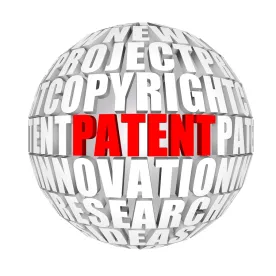Takeaway: The Board may look to case law and statements in the specification to reach the conclusion that the recitation of “adapted for” in a preamble constitutes a limitation meaning more than merely “capable of.”
In its Final Written Decision, the Board concluded that claims 30 and 31 of the ’625 patent were shown to have been unpatentable under 35 U.S.C. § 103(a) as obvious over Laforest. The Board did not find that Petitioner had demonstrated that claims 30 and 31 are unpatentable as obvious under 35 U.S.C. § 103(a) over either Alvarez or Horowitz, however.
The Board had instituted trial on the following grounds: (1) obviousness of claims 30 and 31 under 35 U.S.C. § 103(a) over Laforest; (2) obviousness of claims 30 and 31 under 35 U.S.C. § 103(a) over Alvarez; and (3) obviousness of claims 30 and 31 under 35 U.S.C. § 103(a) over Horowitz. Patent Owner had relied on the Declaration of Mr. Bruce Wesson in an attempt to rebut these challenges.
The Board initially focused on claim construction using the BRI (broadest reasonable interpretation) standard. In doing so, the Board construed the recitation of “[a]n LED light bulb adapted for use in standard automotive mini wedge type bulb sockets” in the preamble of claim 30 to be a claim limitation meaning “an LED light bulb designed to fit into sockets configured to receive a mini-wedge type bulb.” Specifically, based on statements in the specification, the Board concluded that “the claimed LED light bulb is more than merely ‘capable of’ fitting into a mini-wedge socket—it is designed to do so.”
The Board also construed “electrical control means” to be a means-plus-function limitation having “one or more resistors, or equivalents thereof” as its corresponding structure. Moreover, the Board construed “mounted on the printed circuit board” to mean at least that “all of the electrical leads of the electrical control means must be affixed to the PCB.”
The Board then went on to find that claims 30 and 31 of the ’625 patent are unpatentable under 35 U.S.C. § 103(a) as having been obvious over Laforest. Although the Board found that Laforest does not expressly disclose that the wedge socket onto which connector support 10 fits is a mini-wedge type socket[,]” the Board nevertheless agreed with Petitioner that “it would have been obvious for a person of ordinary skill in the art to modify Laforest’s socket to be configured in the required dimensions.” According to the Board, “Laforest teaches the overall motivation of replacing conventional lamps with LEDs because of advantages of style, reliability, and reduction of heat dissipation.”
On the other hand, the Board was not persuaded that Petitioner had sufficiently demonstrated that claims 30 and 31 are unpatentable as obvious under 35 U.S.C. § 103(a) over either Alvarez or Horowitz. According to the Board, neither of these references discloses, teaches, or suggests a second lead connected to the PCB comprising the recited “bulb body.”
Osram Sylvania Inc. v. Jam Strait, Inc., IPR2014-00703
Paper 24: Final Written Decision
Dated: September 8, 2015
Patent: 6,786,625 B2
Before: Bart A. Gerstenblith, Miriam L. Quinn, and Jeffrey W. Abraham
Written by: Quinn



 />i
/>i

